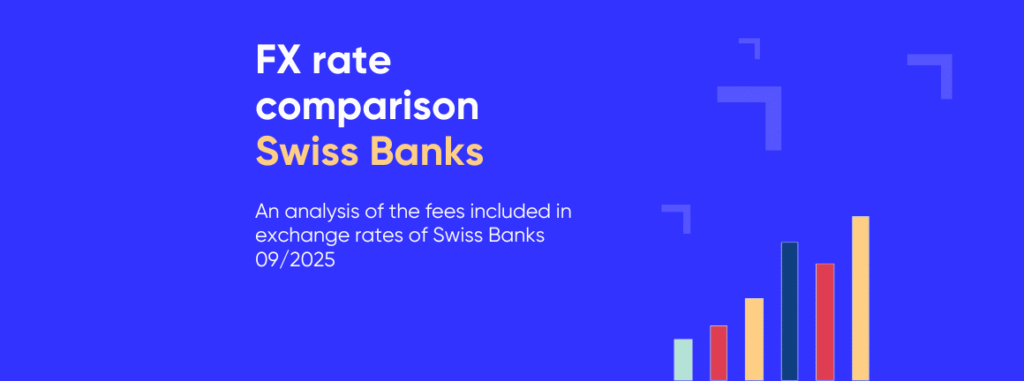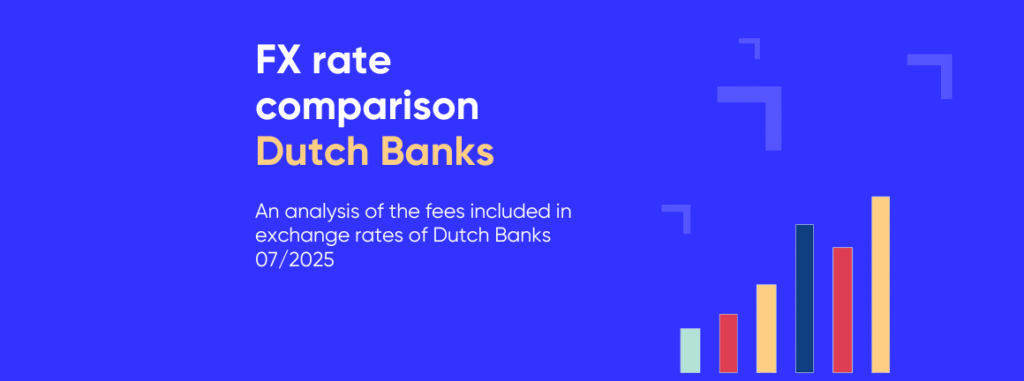
Understanding what drives currency exchange rates is essential for any business involved in global trade. While the factors that influence exchange rates are mainly shaped by macroeconomic trends, businesses can still take proactive steps to protect against foreign currency risk and maintain financial stability.
Top factors that influence exchange rates
At its core, the value of a currency is determined by supply and demand. This, in turn, is influenced by many factors affecting currency exchange rates, including inflation, interest rates, trade balances, and broader geopolitical dynamics. The following sections give you an overview of the most important factors that influence exchange rates.
| Factor | Description |
|---|---|
| Regulatory interventions / Interest rates | Central banks may adjust rates or intervene in forex markets to influence currency value. |
| Inflation rates | Lower inflation tends to support a stronger currency. |
| Economic indicators | Factors such as strong GDP growth and low unemployment boost investor confidence. |
| Political stability & risk | Stable environments attract foreign capital and support the local currency. |
| Trade balances | A surplus increases demand for a nation’s currency. |
| Geopolitical events | Conflicts or crises can disrupt currency stability regardless of economics. |
Regulatory interventions / Interest rates
Central banks and governments influence currency exchange rates through interest rate changes, capital controls, or direct forex interventions. Typically, higher interest rates attract foreign investors, which increases demand for the local currency and boosts its value. Conversely, rate cuts can weaken a currency as returns diminish.
The effectiveness of factors that influence exchange rates also depends on the perceived credibility and transparency of monetary authorities. When a central bank maintains a consistent and predictable policy, investor confidence tends to rise, while a previously unpredictable policy reduces the effect of these measures.
Inflation rates
Inflation is one of the key factors that influence exchange rates. Countries with lower and more stable inflation tend to experience currency appreciation, as purchasing power is maintained and investor confidence remains high. Low inflation is generally associated with economic discipline and higher real interest rates, both of which attract foreign capital.
On the other hand, high inflation erodes the value of money over time, which in turn reduces investor trust and often leads to the sale of a currency on global markets. Exchange rates tend to reflect inflation, as traders and institutions seek safer and more stable monetary environments to protect their assets.
Economic indicators
Metrics such as GDP growth, employment levels, consumer spending, and manufacturing output reflect the strength of an economy. Positive figures typically boost investor confidence, which in turn might increase demand for the currency.
Weaker indicators suggest economic slowdown or instability, which can reduce foreign investment and weaken the currency. Financial markets respond quickly to such data, as the currency values adjust based on expectations of future performance.
Key economic indicators include:
-
- Gross Domestic Product (GDP) growth: Signals overall economic expansion or contraction
- Unemployment rate: Indicates labour market health and economic confidence
- Consumer Price Index (CPI): A key inflation measure influenced by monetary policy
- Purchasing Managers’ Index (PMI): Reflects business activity in manufacturing and services
- Retail sales: Shows consumer demand and spending trends
- Industrial production: Measures output in factories, mines, and utilities
Political stability and risk
Countries with stable governments and reliable legal systems tend to attract more foreign investment, which supports the local currency. Political uncertainty, including elections, policy shifts, corruption, or civil unrest often leads to reduced investor confidence. This heightened risk can cause significant currency depreciation, even if economic fundamentals appear sound.
Foreign currency exchange markets are sensitive to political developments, especially when they affect monetary or fiscal policy. A stable political environment, by contrast, fosters predictability and trust, which makes a country’s currency more attractive to global investors.
Trade balances
A country’s trade balance measures the difference between exports and imports. A trade surplus, where exports exceed imports, typically strengthens a currency because foreign buyers need to purchase the exporter’s currency to pay for goods. This sustained demand increases its value.
Conversely, a trade deficit often leads to depreciation, as more of the local currency is sold to acquire foreign goods. Persistent trade deficits may also raise concerns about a country’s competitiveness or economic health, which potentially deters foreign investment and weakens the currency’s performance.
Geopolitical events
Geopolitical events can have immediate and profound effects on currency exchange rates, even when a country’s economic fundamentals are reasonable. Conflicts, wars, sanctions, diplomatic tensions, terrorist attacks, and natural disasters can all shake investor confidence.
Such uncertainty often drives capital into perceived safe haven currencies like the US dollar (USD), Swiss franc (CHF), or Japanese yen (JPY), while currencies of the affected regions tend to fall. Additionally, supply chain disruptions or commodity price shocks triggered by geopolitical instability can influence trade flows and inflation, which additionally affects exchange rates.
What businesses are affected by currency exchange rates?
Businesses engaged in cross-border trade are especially vulnerable to exchange rate risk. This includes most e-commerce companies that export goods or services, manufacturers that import raw materials as well as companies that operate subsidiaries abroad. Currency movements can affect revenues, cost structures, and ultimately, profit margins.
For example, a strengthening foreign currency can increase the cost of imported goods, while a weakening one may reduce the value of foreign earnings. Beyond manufacturers and exporters, industries such as tourism, hospitality, logistics, and finance are also exposed. Managing these risks is essential, as unhedged currency volatility can erode earnings or disrupt pricing strategies.
How can businesses mitigate foreign exchange risk?
Although exchange rates are driven by macroeconomic and geopolitical forces beyond a business’s control, there are several easy strategies to mitigate foreign currency risk. From proactive financial planning and natural hedging to using FX tools, companies have the ability to limit their exposure and safeguard their margins.
Monitoring and planning
The first step in managing currency risk is awareness and preparation. By understanding how certain currencies behave in response to global events or macroeconomic data, companies can anticipate potential risks and adjust their financial strategies accordingly. Incorporating scenario planning into budgeting can also help firms prepare for both best- and worst-case currency movements.
Businesses should regularly monitor exchange rates, subscribe to market updates, and review economic calendars to track relevant announcements. With amnis’ financial ecosystem, you can easily set a daily or custom exchange rate alert to get notified immediately.
Hedging with financial instruments
Financial instruments are one of the most effective ways to manage foreign exchange risk. These tools help businesses reduce uncertainty by fixing or limiting exchange rate exposure in the future. Although hedging involves some cost, the protection it provides against adverse currency movements can preserve profit margins and improve financial planning.
-
- Forward contracts: Lock in an exchange rate for a future payment or receipt
- Currency options: Offer the right, but not the obligation, to exchange at a pre-agreed rate
- Limit orders: Companies can set their desired price and get the deal as soon as the target rate is reached
Natural hedging
Natural hedging involves aligning revenues and expenses in the same currency to reduce exposure to exchange rate movements. For instance, a business selling products in the UK could source materials or services from UK-based suppliers or invoice UK customers in GBP to limit reliance on foreign currency transactions.
Similarly, if a company generates income in EUR, it could use those same EUR to cover expenses throughout the EU. While not always possible, natural hedging is a simple and cost-effective strategy that reduces the need for financial instruments and makes cash flow more predictable in a fluctuating currency environment.
Using low-margin providers
Traditional banks often charge high margins on foreign currency transactions and offer less favourable exchange rates. In contrast, specialist fintech and foreign exchange providers offer competitive pricing, faster processing, and enhanced transparency. These platforms provide multi-currency accounts, real-time rate alerts, and tools for automated payments, which makes them especially attractive to cross-border enterprises.
By choosing a low-margin provider, businesses can reduce transaction costs and increase operational efficiency. This approach not only lowers expenses but also supports better decision-making through improved visibility and control.

"*" indicates required fields
Key takeaways from factors that influence exchange rates
The factors affecting currency exchange rates are shaped by a complex interplay of macroeconomic indicators, such as interest rates, inflation, and trade balances, as well as geopolitical developments and market sentiment.
Firms exposed to foreign currencies must recognise these risks and act proactively. A strong currency risk management strategy that includes regular monitoring, financial hedging, and operational adjustments can protect margins, improve predictability, and enhance long-term competitiveness in international markets.
-
- Core drivers include interest rates, inflation levels, trade balances, and political stability.
- Businesses operating across borders face both potential gains and risks from currency fluctuations.
- Effective currency risk management combines market monitoring, hedging strategies, and the use of low-cost FX tools.
amnis protects businesses against exchange rate risks
amnis’ financial ecosystem provides companies with powerful tools to hedge currency risks while keeping international transaction costs low. With competitive exchange rates, minimal fees, rate alerts, and access to forward contracts, businesses gain the ability to plan ahead and safeguard their margins against sudden market volatility.
Companies can secure future exchange rates through forward contracts, use multi-currency accounts for natural hedging, and execute trades exactly at their desired price through automated limit orders. By relying on local payment schemes instead of SWIFT, they benefit from faster, more efficient global transfers. All financial operations can be managed centrally, around the clock, through a single intuitive dashboard.
Discover how the amnis ecosystem helps your business stay protected against exchange rate risks.
FAQ
Below you will find answers to the most common questions about currency exchange trends and FX risk management.
Exchange rates are influenced by a wide range of factors including interest rates, inflation, trade balances, political stability, and global events. Investor sentiment and central bank policy also play significant roles in shaping currency values.






